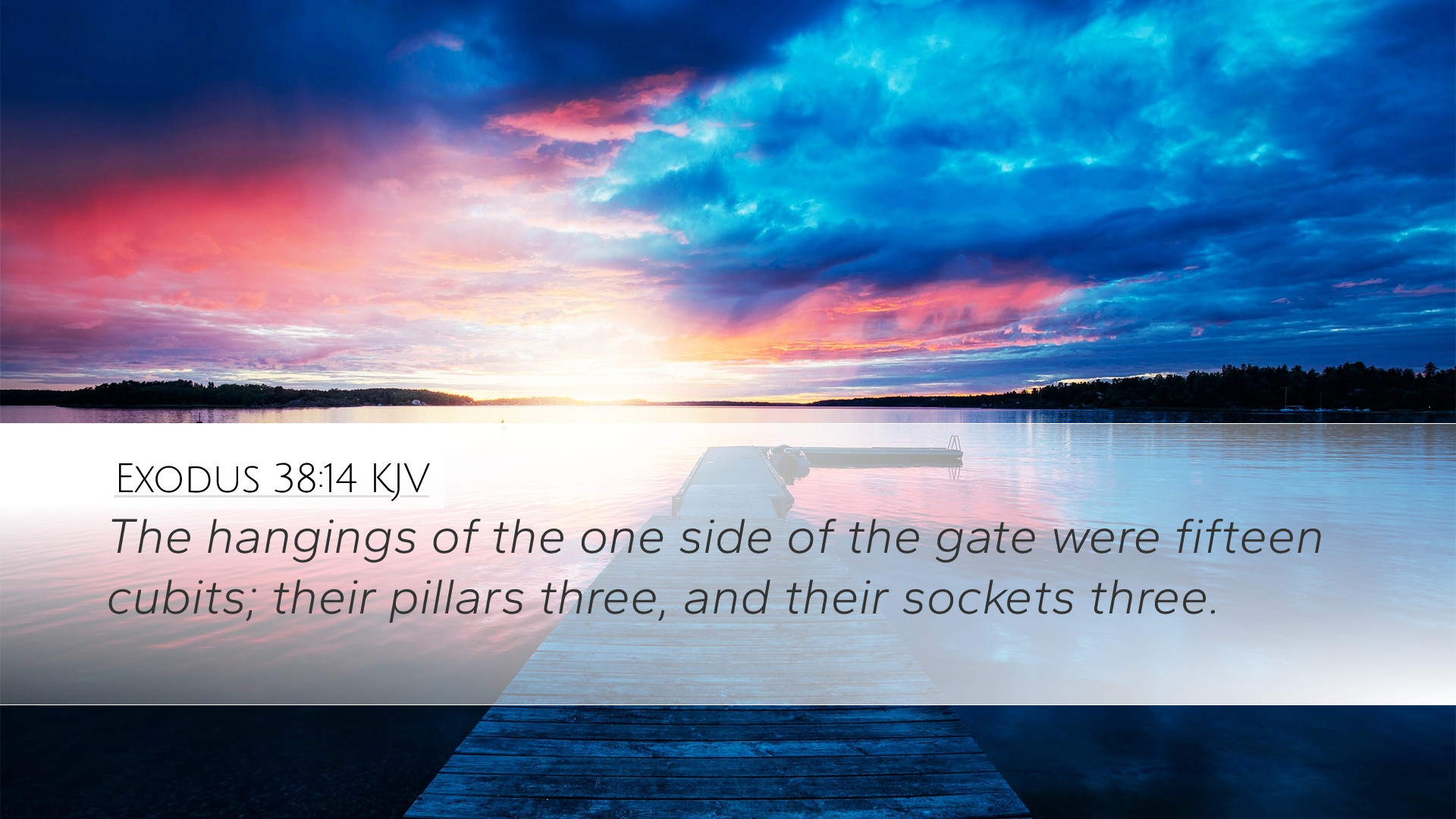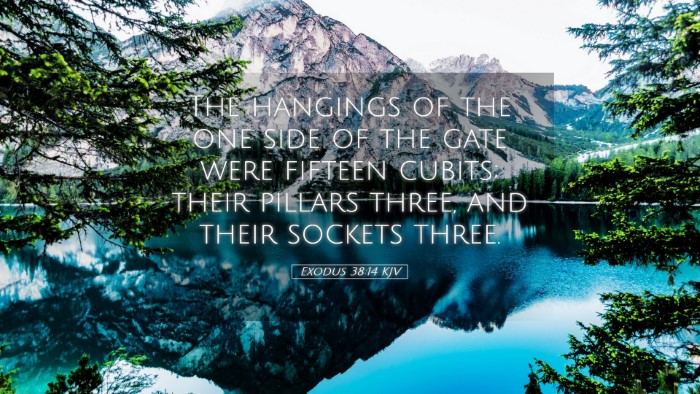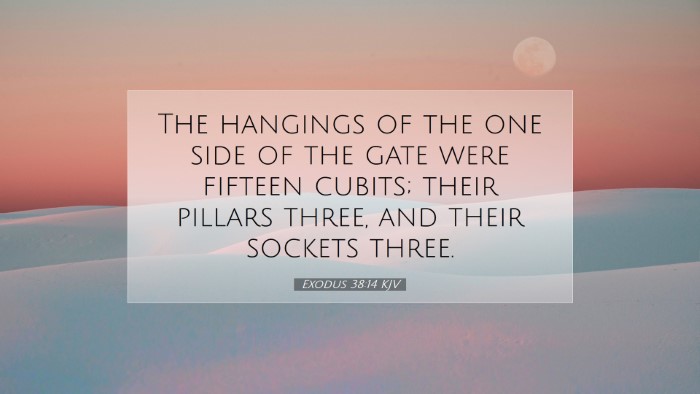Exodus 38:14 Commentary
Bible Verse: "The hangings of one side of the gate were fifteen cubits: their pillars three, and their sockets three."
Introduction
The construction of the Tabernacle was rich with symbolism and practicality, detailing how God desires to dwell among His people. Exodus 38:14 provides specific measurements regarding the hangings at the entrance of the Tabernacle, which serve as a gateway into the sacred space. Through a detailed analysis of this verse, various public domain commentaries shed light on its theological and practical implications.
The Significance of the Hangings
Symbolism of the Hangings: According to Matthew Henry, the hangings symbolize the separation between the holy place and the outside world. The fifteen cubits of fabric create a boundary, indicating that access to the presence of God is not taken lightly. The design prompts worshippers to reflect on the holiness of God and the reverence required to approach Him.
Visual Representation: Albert Barnes notes that the gate’s dimensions and the materials used in its construction were intended not only for functionality but also for aesthetic beauty, signifying the glory and honor of God. The vibrant colors and intricate designs of the hangings conveyed the splendor of God’s presence.
Understanding the Measurements
The reference to "fifteen cubits" is significant in its precision, as emphasized by Adam Clarke. Clarke highlights that the measurement implies a deliberate and careful approach to creating the Tabernacle, symbolizing God's meticulous attention to detail in establishing His covenant with Israel.
- Contextual Importance: The hangings’ height served to maintain an appropriate elevation that filled the worshippers with awe and reverence.
- The Role of the Pillars: Each of the three pillars mentioned reinforces the stability and strength required to uphold the sacred entrance. In the biblical narrative, pillars often symbolize strength and support.
Theology of Access
The description of the gate and its construction ties back to crucial theological principles regarding access to God. Matthew Henry emphasizes that the carefully crafted hangings represent Christ as the gate through which believers must enter (cf. John 10:9). Just as the Israelites had a physical barrier, believers today have a spiritual means of access through faith in Christ.
Practical Applications
For contemporary readers, this verse encourages examination of the way we approach God in worship. Albert Barnes challenges believers to consider their own attitudes and preparations when entering into the presence of God. Are our hearts and minds appropriately aligned with the holiness of the moment?
- Preparation for Worship: Just as the Israelites prepared the physical space, believers are called to prepare their hearts and lives for communal and personal worship.
- Boundary of Holiness: The delineation offered by the hangings serves as a reminder that while God desires relationship, He remains holy and just. This distinction should guide how believers engage with spiritual practices.
Conclusion
Exodus 38:14, while a seemingly straightforward description of the Tabernacle's gate, opens up rich theological themes related to God’s holiness, the access believers have through Christ, and the necessary preparations for entering into the divine presence. By studying these insights from Matthew Henry, Albert Barnes, and Adam Clarke, pastors, students, theologians, and Bible scholars are encouraged to delve deeper into the significance of sacred spaces and the profound ways in which they interact with God’s design for worship.


